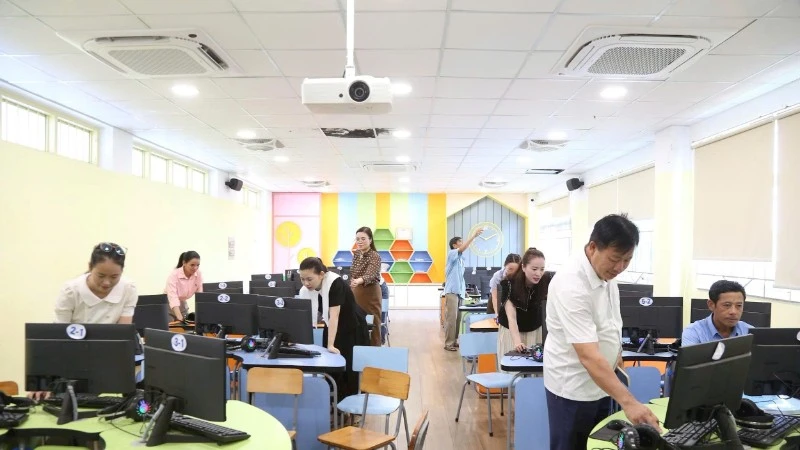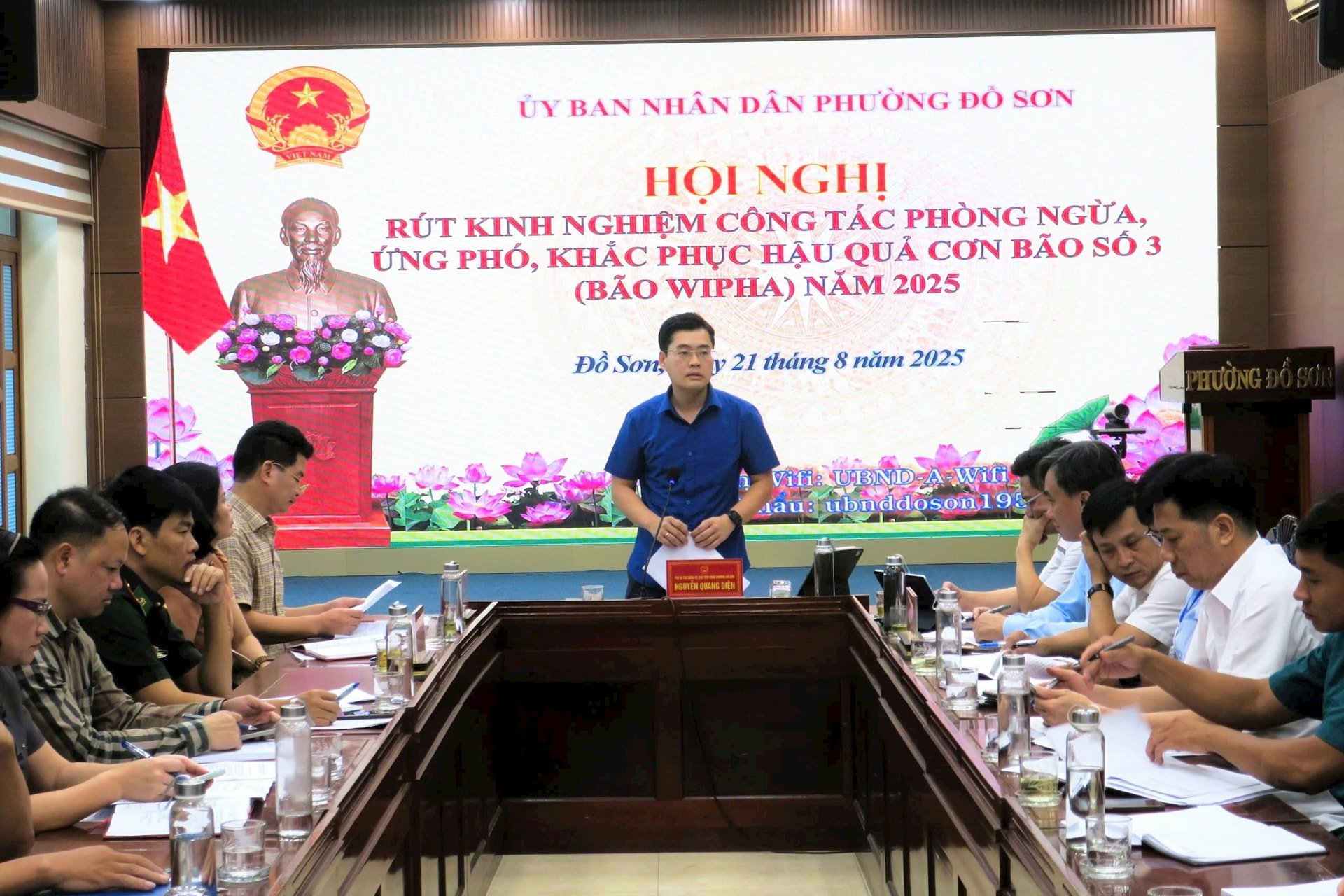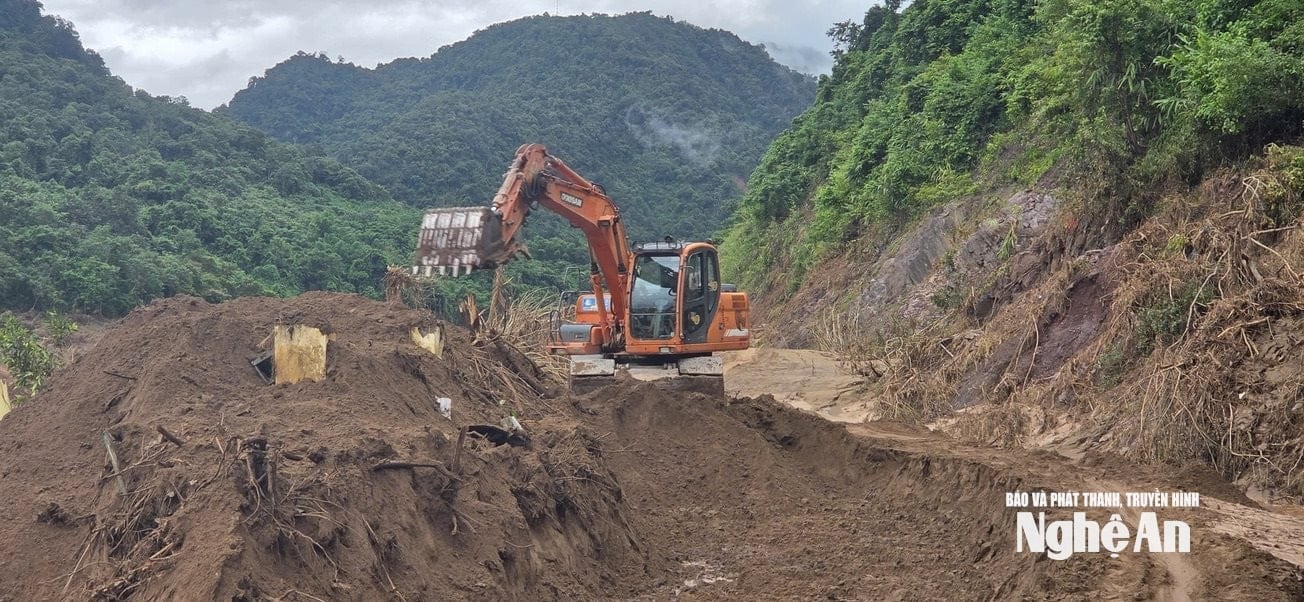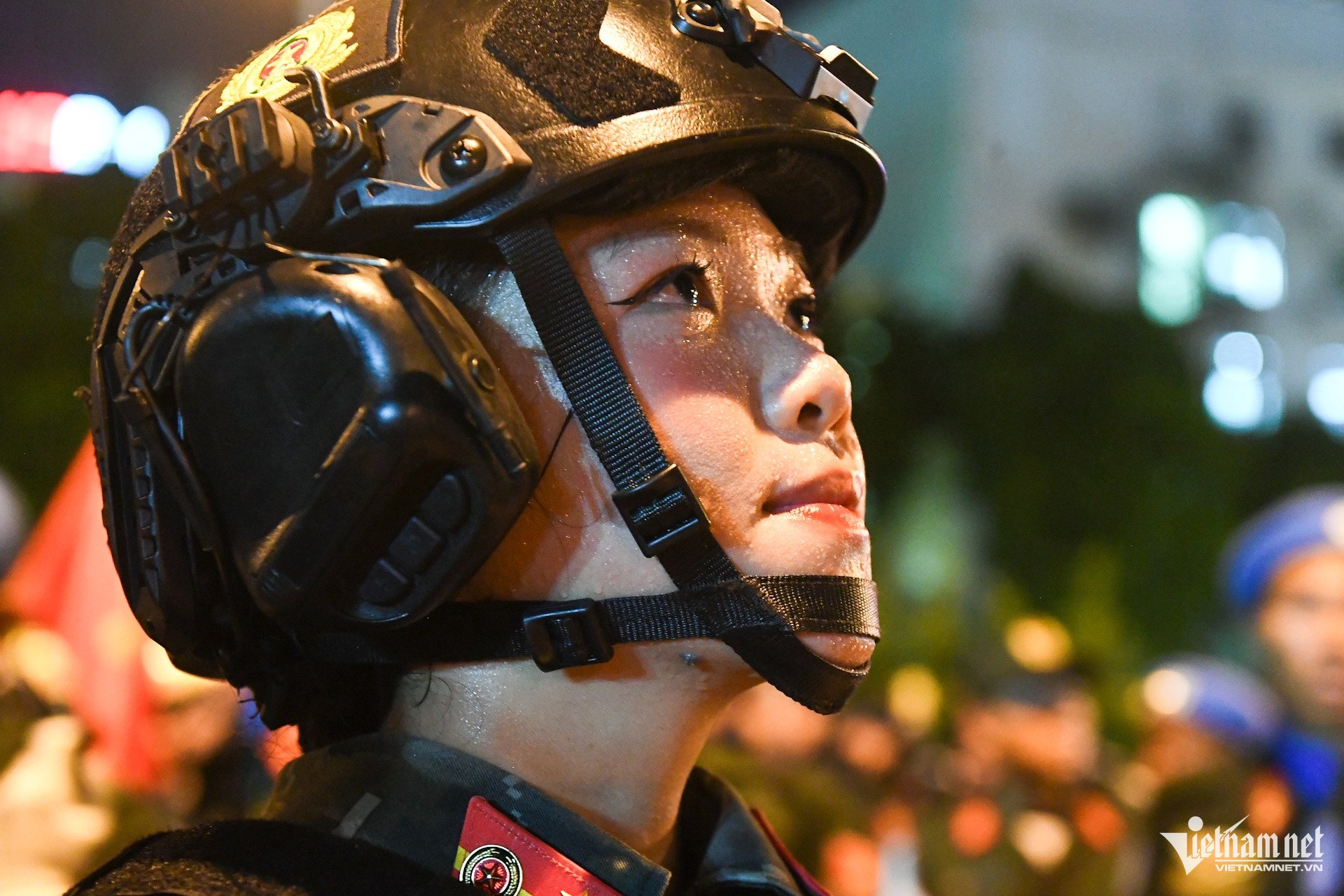 |
| Mr. Ly Kim Bao visited a household specializing in producing seedlings in the group. |
Welcoming us in a spacious three-story house was Mr. Ly Kim Bao, 62 years old, Secretary of Party Cell 2B. His face was radiant, his eyes shining with pride as he told us about the difficult years.
He and his relatives moved to this land in the 1950s, when it was still a wild bamboo and rattan forest. At that time, people mainly grew corn and rice on the fields. When the land became infertile, they moved elsewhere, and after 4-5 years, they returned to clear the land to continue farming, so the forest land was not yet effective. Poverty persisted, and people's lives were difficult.
In 2000, Mr. Bao was elected as Party Secretary. Realizing that people could not be left in poverty forever, he proactively sought a new direction. That year, he was able to visit and study an effective forest planting model in Lao Cai province.
Realizing the great potential of this model, he returned to his locality and immediately started mobilizing people to convert their fields to forest plantations.
However, at first, people did not trust him. Some households even hid the seedlings they were given in the forest, or even threw them away, not supporting him in planting forests. Undaunted, Mr. Bao's family became a pioneer. He personally planted, cared for, disseminated techniques, and persistently went from house to house to convince people.
By 2008, his family began to have income from the first harvest cycle of the tallow tree. With the money, he built a solid three-story house, gradually buying amenities.
From that practical achievement, people began to believe and follow. Thus, the forest planting movement spread. Mr. Bao and the Party Cell built annual resolutions and directed associations and organizations to organize extensive propaganda.
He directly guided people to choose the type of tree suitable for the terrain: areas near the road planted acacia and fat; areas far away planted cinnamon, because cinnamon trees are mainly harvested for bark, so transportation is easier.
To date, more than 300 hectares of acacia, tallow and cinnamon trees have covered the production land of Group 2B. Thanks to forest planting, many households can accumulate capital, expand production, buy motorbikes, cars, and build houses. If in 2000, out of 60 households in the group, there were 57 poor households and only 3 level 4 houses, by 2024, the group had 88 households, of which only 3 were poor households, all of whom had special circumstances.
87 households have built solid houses, nearly 20 households own family cars, 100% of households have motorbikes and audio-visual equipment, and children can go to school regularly.
The forest planting model in Group 2B has now become a study and visit destination for many localities in and outside the province. Mr. Bao's story is a living proof of faith, dedication, sense of responsibility and heart for the community, a person who has contributed to writing a new page for the land of Group 2B today.
Source: https://baothainguyen.vn/kinh-te/202508/tu-dat-trong-hoa-rung-xanh-6741cd1/































































![[Photo] Politburo works with the Standing Committee of Hanoi Party Committee and Ho Chi Minh City Party Committee](https://vstatic.vietnam.vn/vietnam/resource/IMAGE/2025/8/21/4f3460337a6045e7847d50d38704355d)
































Comment (0)